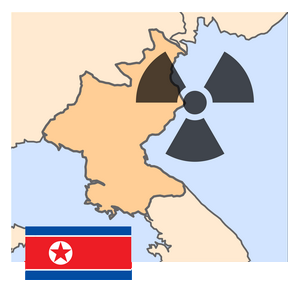North Korea’s nukesU.S. should reject partial North Korean “concessions”: Experts
The failure to reach an agreement at last week’s Hanoi meeting between President Donald Trump and the North Korean leader Kim Jong-un in Hanoi is but the latest indication that the differences between the United States and North Korea over the latter’s nuclear weapons capability are deep and complex.

For now, North Korea will hold its nuclear weapons // Source: commons.wikimedia.org
The failure to reach an agreement at last week’s Hanoi meeting between President Donald Trump and the North Korean leader Kim Jong-un in Hanoi is but the latest indication that the differences between the United States and North Korea over the latter’s nuclear weapons capability are deep and complex.
The Institute for Science and International Security notes that whether various offers to shutter and open up for inspection North Korea’s nuclear or missile facilities should be carefully considered to see whether they would constitute a technically meaningful deal which would significantly constrain North Korea’s nuclear weapons program.
It is worth considering the various facilities that could be involved in one of North Korean offers, namely the shutting down of the Yongbyon nuclear complex – but, the Institute says, this offer by itself appears to offer a minimal step toward denuclearization. “In this case, there would be a high probability of ending up with a legitimized, nuclear-armed North Korea and no denuclearization for the foreseeable future,” the Institute warns.
>The Institute offers a detailed description of the different components of North Korea’s nuclear weapons infrastructure:
Yongbyon Nuclear Complex: At best, a shutdown of the two main reactors at the Yongbyon nuclear complex would be a first, positive step, but one that is not worth sanctions relief. If significant sanctions relief is given for such a limited initial step, based on earlier negotiation efforts, it carries significant risk of being the only step that North Korea takes toward denuclearization, pocketing sanctions concessions while retaining its nuclear weapons, enrichment facilities, and ballistic missile capabilities. The shutdown of Yongbyon and its facilities would be positive, but it certainly cannot be an American end goal for rendering the nuclear weapons program fundamentally constrained. In fact, given how many nuclear weapons North Korea already has, the shuttering of Yongbyon should be viewed as a minor step. Yongbyon hardly represents North Korea’s “crown jewels,” as some have called it.
5 Megawatt-Electric (MWe) Reactor: North Korea appears to have tried to salvage the aged 5 MWe reactor at Yongbyon, but recently something must have gone wrong because the reactor seems to be having problems. Thus, it may well be at the end of its lifetime in any case, making a shutdown of negligible impact.
